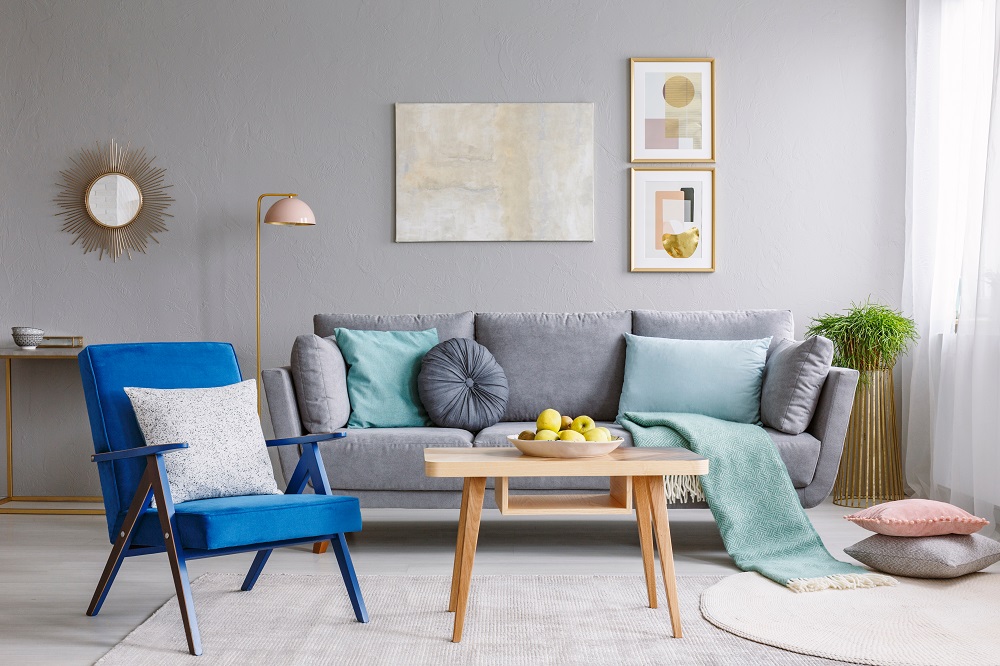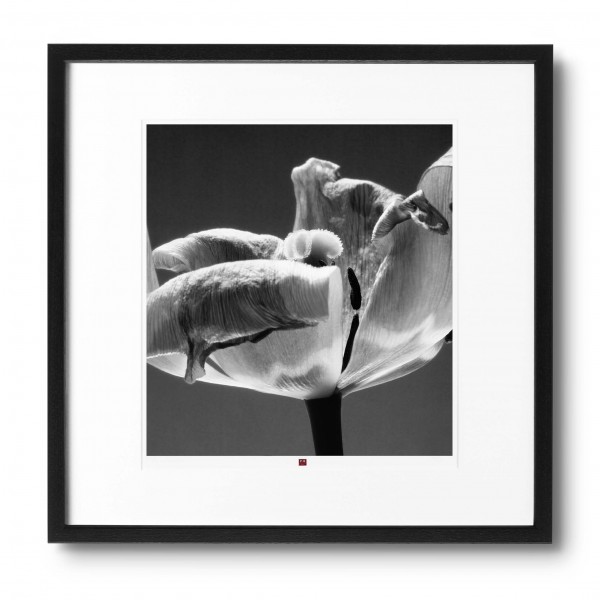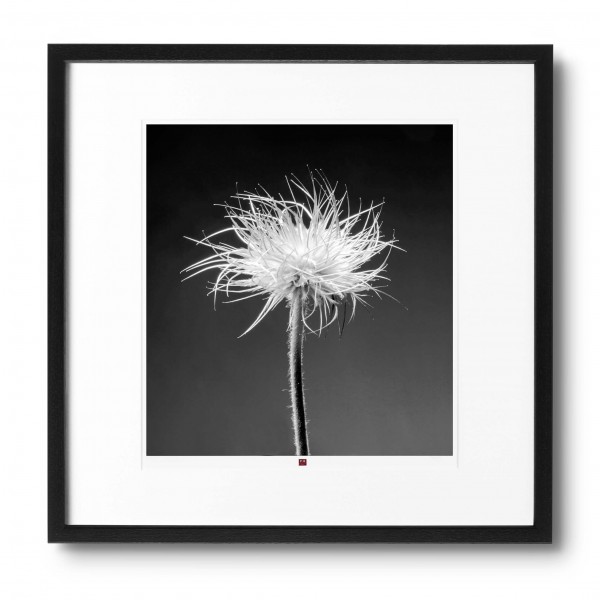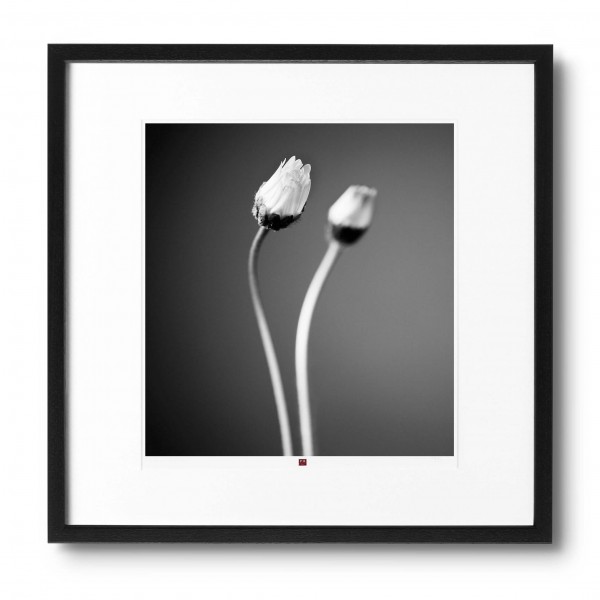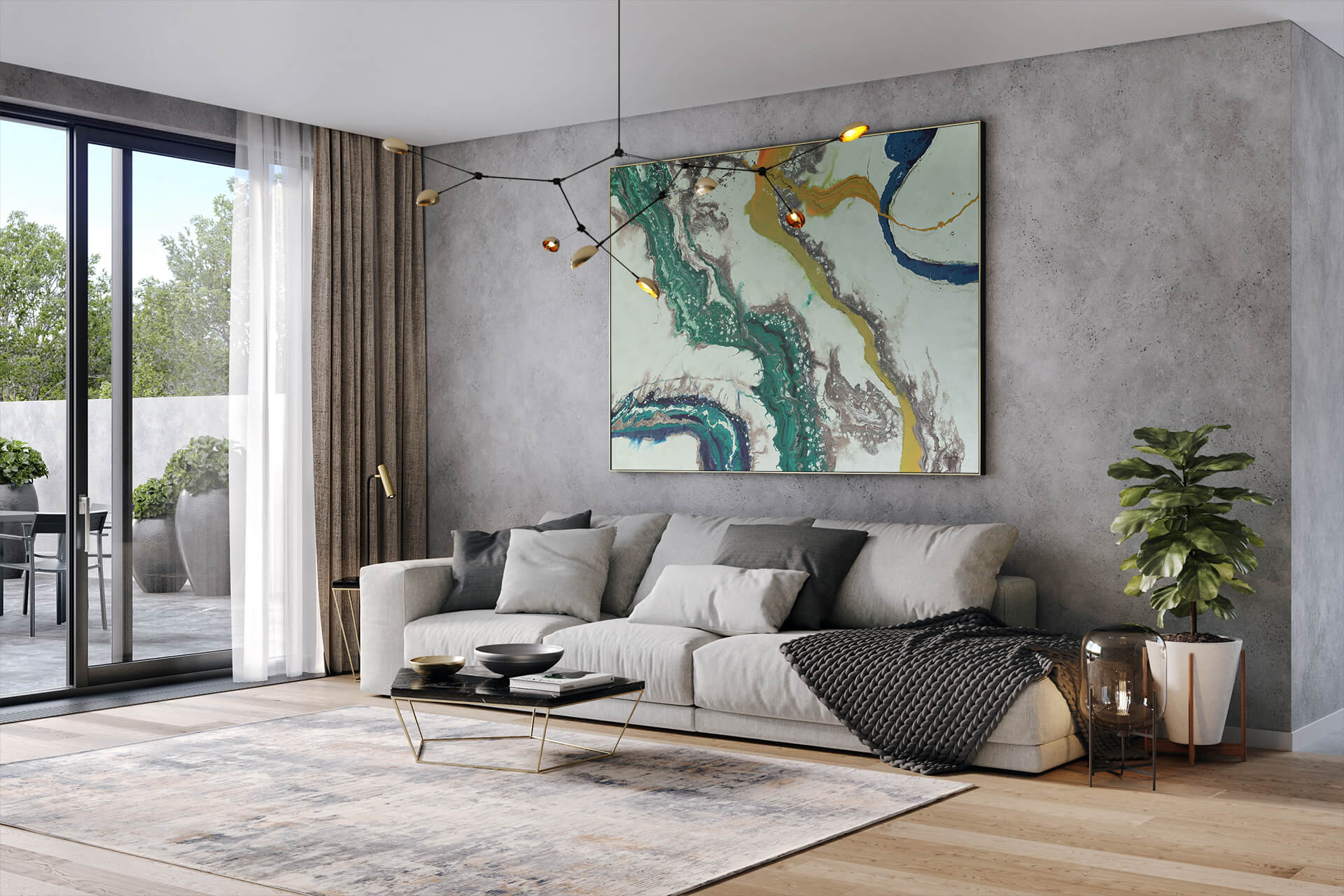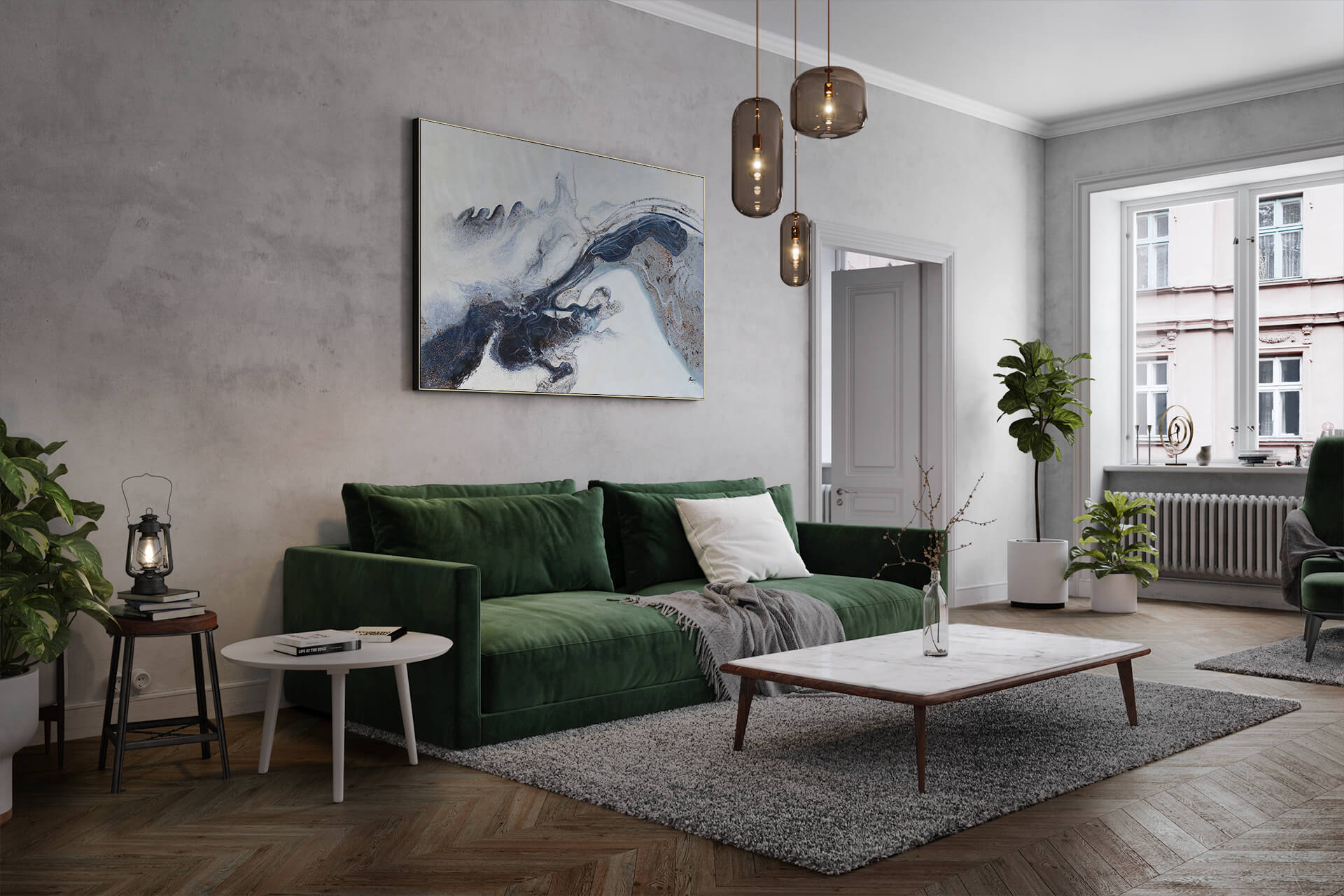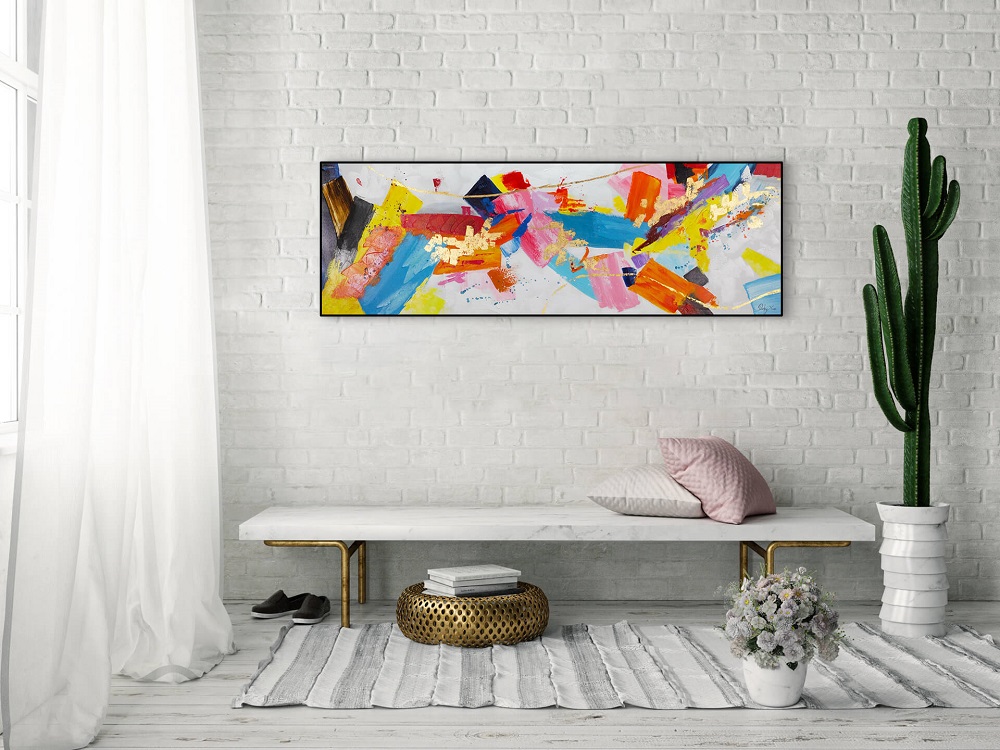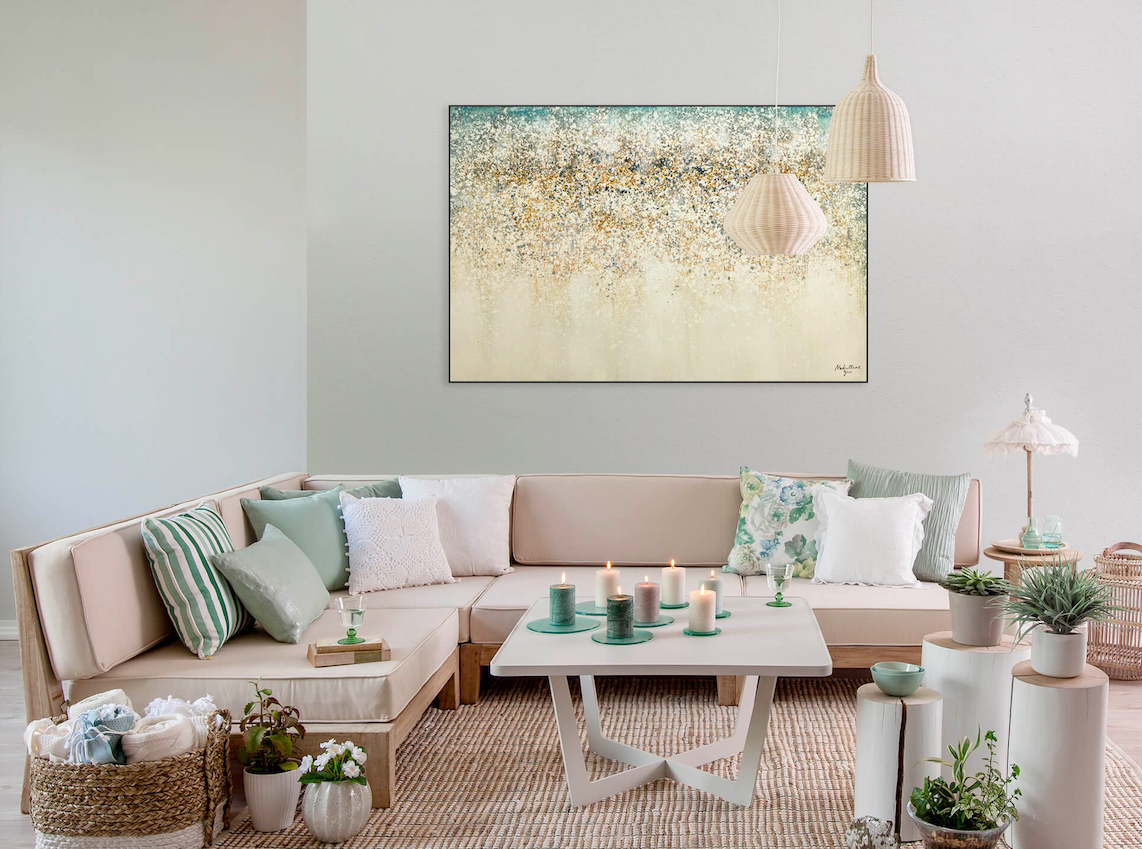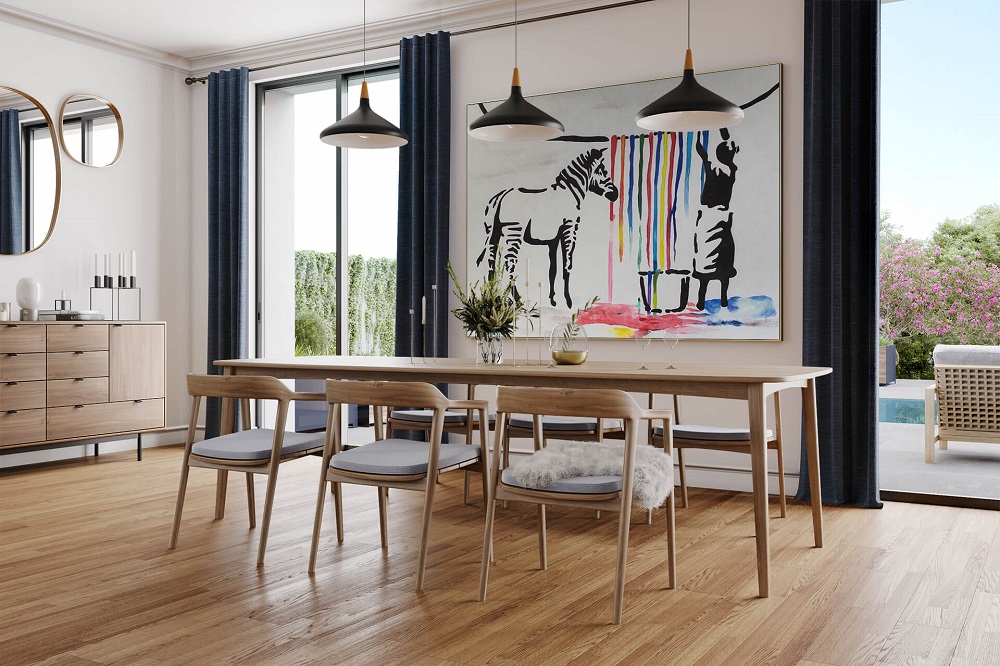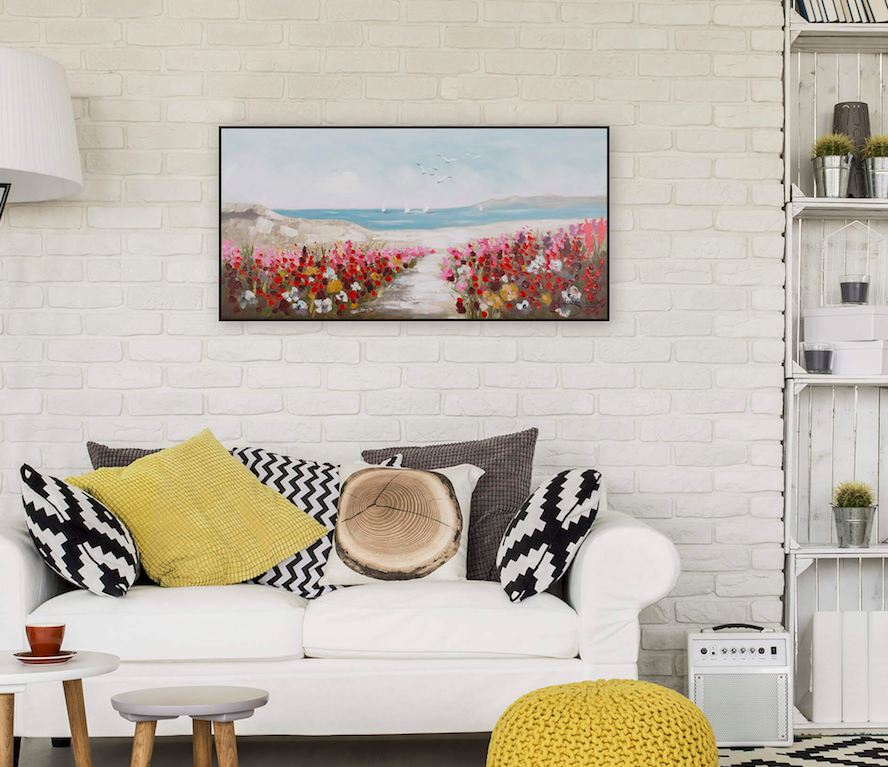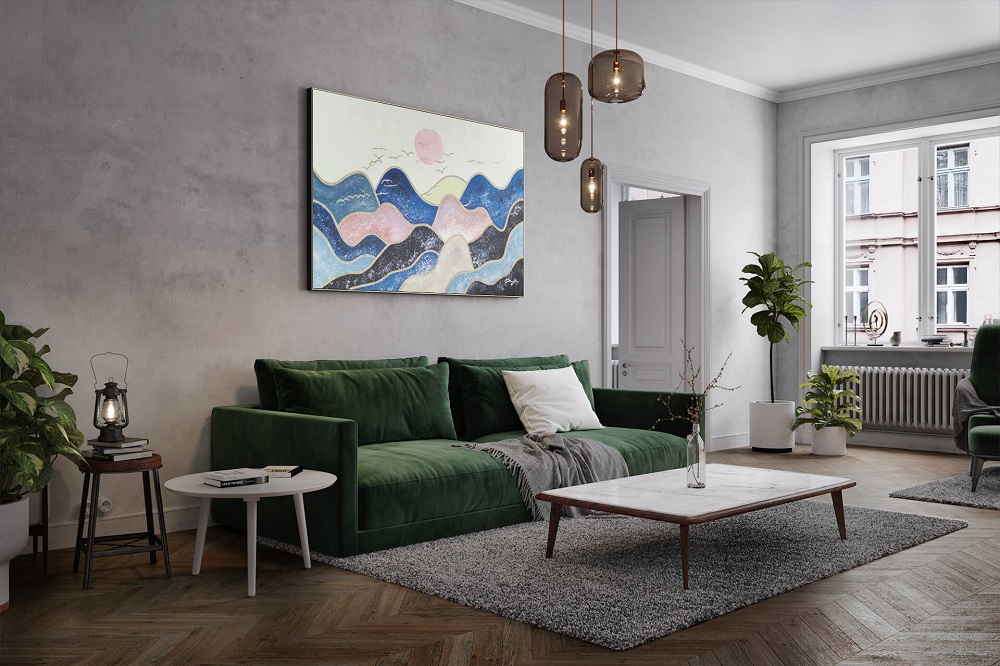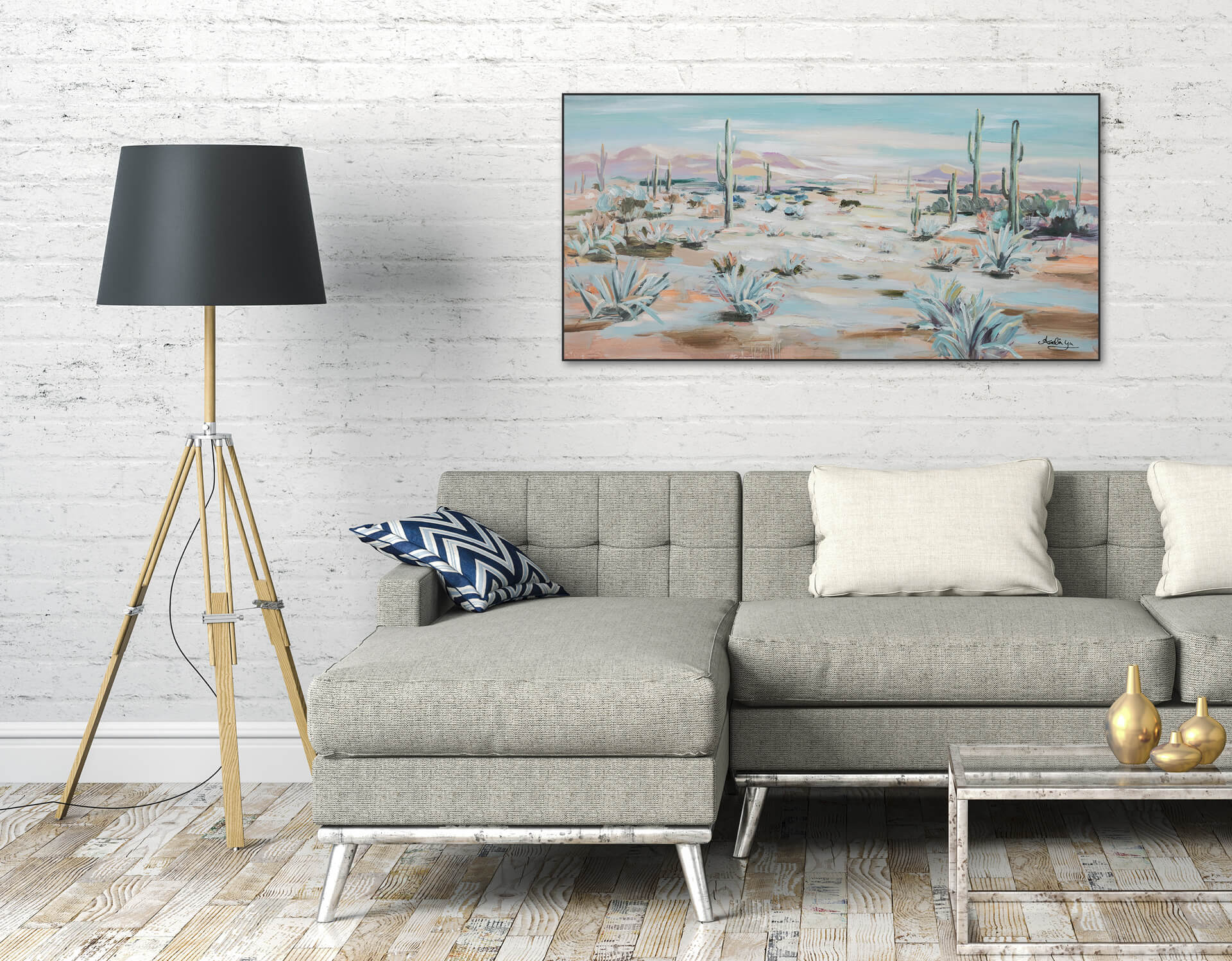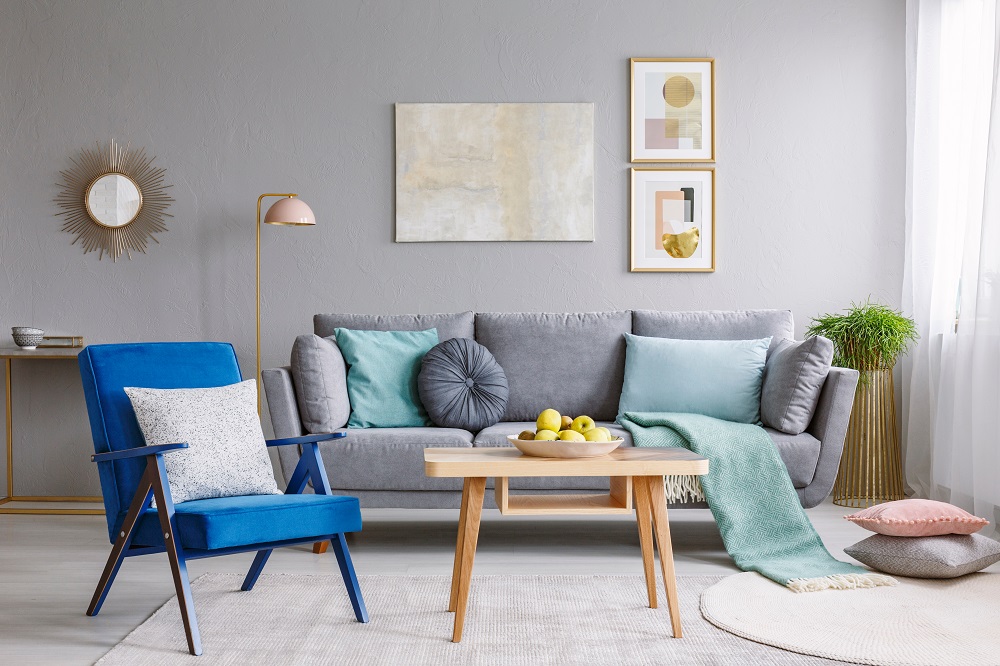
Pictures for the living room: modern wall decoration ideas
The living room is where you spend most of your free time – between the sofa and bookshelves, the TV and coffee table, you sit with friends, relax in the sun or enjoy a glass of wine. That makes it all the more important to have attractive walls in your living room. Here are some practical tips and ideas!
Table of contents
How to make your living room walls look great
Your living room has bare walls and you don’t know where to start? Or do you need a breath of fresh air, new paintings or just something different? We show you what to look for when decorating your living room walls. Be inspired by our ideas for hanging, colours and motifs.
Hanging ideas and tips
The perfect place for a painting depends on many factors, not least your personal taste. Height and placement can make a big difference. Here are some options to help you find the right place for a painting in your living room.
Paintings above the sofa
Large paintings, canvases and frames need sufficient space to unfold their effect. They function as a central element and should therefore be hung as prominently as possible. It is best to hang the painting centrally above a piece of furniture that is also central. Classically, this is above the sofa, but a large painting also develops its radiance above a sideboard or the fireplace.
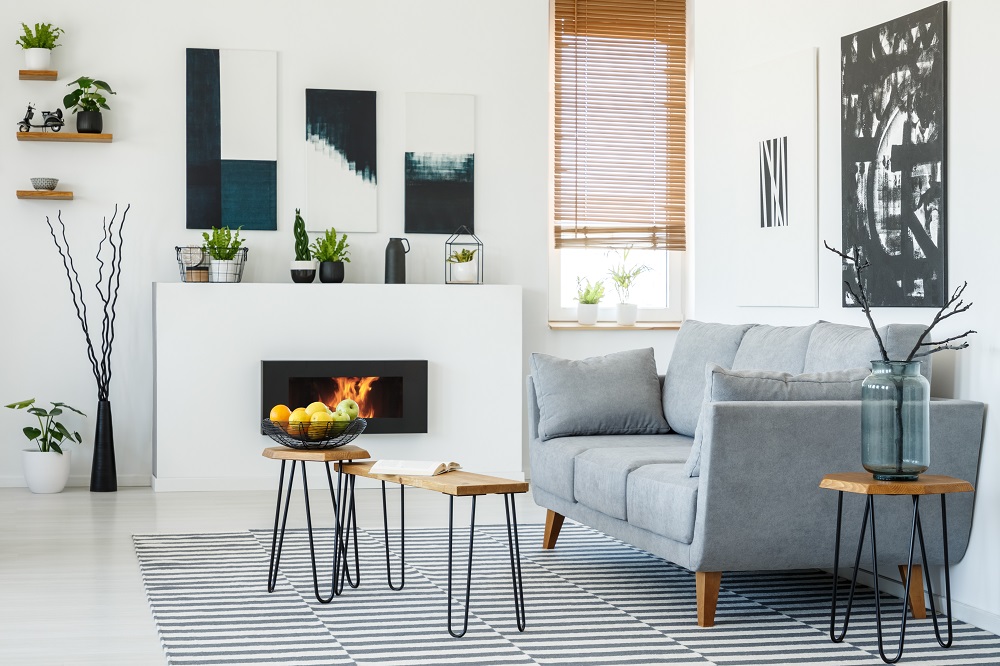
By the way, multi panel paintings can be combined to create a large painting that looks great over a sofa or sideboard.
Painting galleries
Smaller paintings can be wonderfully combined to form a gallery. If you do not have a perfectly coordinated composition, it is a good idea to work with contrasts in both the motifs and the frames. Different eras, photos, posters, word art, decorative objects – anything goes here. Choose paintings that you like and go with your gut feeling. The arrangement will then emerge in the course of the collection.
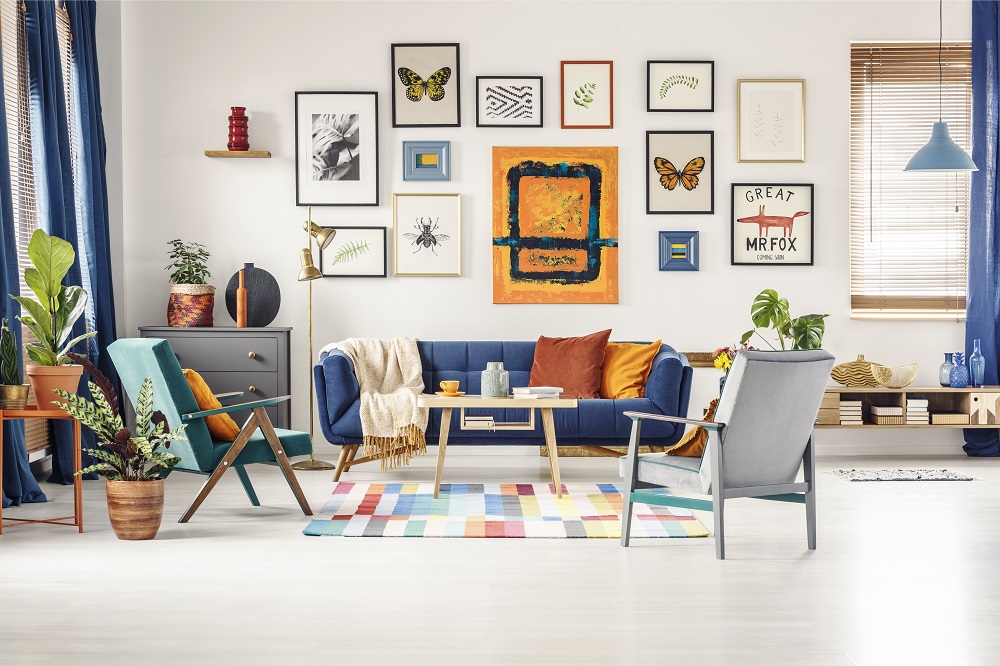
You can also mix and match frames. Above all, you should mix size and horizontal or vertical orientation to create a coherent overall picture. If you prefer to bring more calm into your picture gallery, choose materials and colours in the same style. Narrow black frames, passepartouts, frames in white and gold or plain wooden frames bring the content into focus.
Tip: Lay your chosen framed artworks on the floor beforehand and slide them into the position as they will hang on the wall afterwards. This gives you a chance to see if you like the result. For inspiration, try different hanging techniques:
- Swarm-Hanging: Arrange several smaller pictures around one larger picture.
- Petersburg Hanging: Place many pictures at close intervals above and next to each other to create a total work of art.
- Gallery-Hanging: Align paintings (of different sizes) on an axis so that the bottom edge or the middle of the pictures hang on one level.

Paintings on the wall shelf
A practical and elegant way to display pictures is to arrange them on a floating shelf or rail. The advantages are obvious: there’s no need to drill holes – at least not once the shelf is suspended. And you can change and rearrange the pictures as you like.
Tip: Rather than simply placing the pictures next to each other, use frames of different sizes that can be staggered in front of and behind each other. This creates a ‘skyline’ that you can combine with flowers, candles or other decorations to create an overall picture.
Individual design with wall paintings
What would rules be if you couldn’t break them? Defy all expectations and invent your own wall design. Get experimental and hang your pictures against all the tips and advice. Surprise your guests with pictures in unexpected places.
Where does it say that paintings have to be hung? Put pictures on the floor and just lean them against the wall. Why should painting galleries hang in the middle of a wall when you can have them run across corners? And does a painting have to be seen in its entirety or isn’t it much more interesting if it blends in with the hanging plant? Or if there is no painting hanging in the frame at all? Try out unusual placements and follow your artistic instinct.
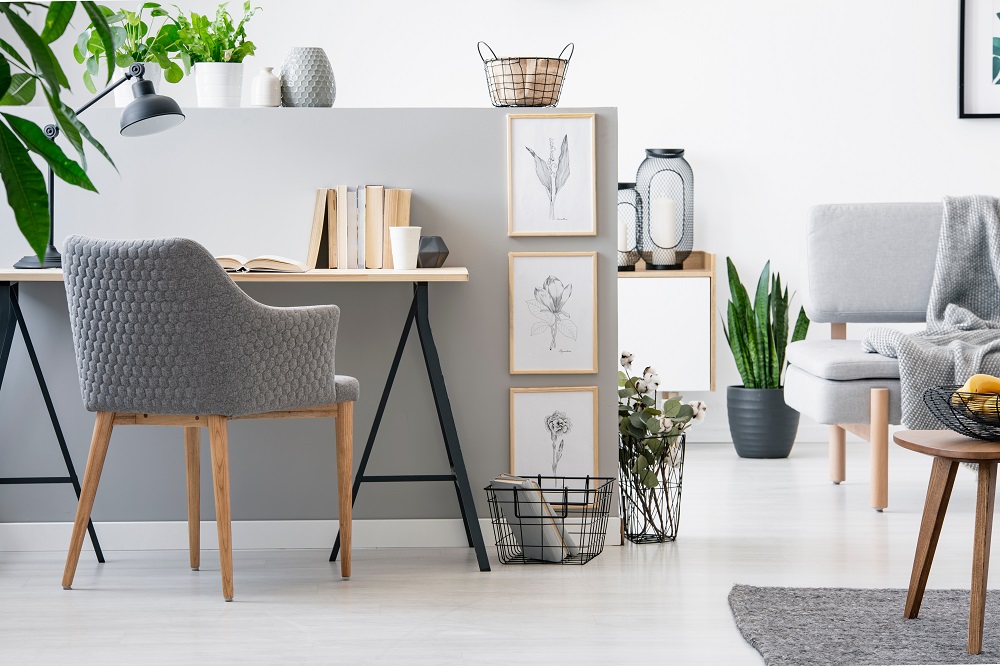
Suitable colours for the paintings in the living room
You already know which hanging you want in the living room, but haven’t chosen any paintings yet? The first thing to consider is colour. Do you prefer colourful pictures, or do you prefer to keep things simple and discreet? We have suggestions to suit all tastes.
Black and white images
Elegant and concise, yet understated, black and white images draw attention to shapes and textures. The play of light and shadow allows the viewer to literally feel the object. Play with patterns and bring a stylish aesthetic to your living room with monochrome images. Black and white works well with minimalist interiors and can be combined with wood or grey tones.
At KunstLoft you will find monochrome art photographs with impressive close-ups:
Colourful splashes and smooth gradients
Colourful paintings can brighten up a modern interior, adding lightness and warmth to straight lines and angular furniture. Neutral colours work well with sofas, curtains and carpets as they can be easily combined and add a touch of luxury. Use paintings to set colourful accents and and create a friendly atmosphere in your living room.
Match the colours of your furniture. Just as you match your clothes and accessories, you can match colours of your living room walls to your furniture. Do your decorative cushions have a striking colour? Is there a colourful lamp in your living room? You can also integrate flower pots, bowls, vases and decorative objects into your colour scheme with wall paintings.
If you already have a colour scheme, you can find matching paintings in all shades at KunstLoft, for example with Fluid Painting.
Bright colours and pure life
Why choose pastels and creams when you can choose really bright colours? Bright colours exude energy and infect you with their cheerfulness. If you are looking for a real eye-catcher and want to add some pizzazz to a room, vibrant colours are the way to go.
But be careful: Colours need space to work. Neutral wall colours and minimalist furniture allow vibrant colours to come to the fore without cluttering the room.
Motif-Ideas for modern paintings in the living room
Choosing the right motif is the most difficult one when it comes to wall design in the living room. Every now and then, we discover a painting that appeals to us at first sight and we know immediately: it belongs on our wall. In most cases, however, it comes down to careful composition. Read our tips on how to find a suitable motif.
Abstract wall paintings for modern flair
Abstract paintings have the ability to fill a room with energy. Shapes and gradients, brushstrokes and geometric forms radiate an effect that serves the entire spectrum from stimulating to calming-meditative. The great thing about abstract paintings – they can be easily integrated into different interior design styles. Whether country house and vintage or modern furnishing, abstract motifs are flexible and fit your home and your individual style.
By the way: The paintings at KunstLoft are as individual as your living room. All our paintings are unique, available only once and signed by the artist. Secure your favourite piece!
Abstract paintings blend into their surroundings and leave room for interpretation – KunstLoft provides you with modern picture ideas for your living room.
Tip: For each painting at KunstLoft you will find a description that puts into words what mood the painting conveys. Let the image take effect on you and visualise how the painting would look in your living room. With the help of our “virtual test hanging” function, you can easily project your desired painting onto your wall and try out where it will look best.
Street art in the living room
You can make a clear statement with specific motifs. Street art is particularly suitable for this. Bring the message from the street into your living room and make a statement about love, life or a political issue that is close to your heart. Street art livens up modern interiors and makes you think. Motifs by Banksy are very popular, with that certain something that brings a smile to the viewer’s face. Learn more about famous street artists whose spray art on house walls has long since become historic works of art.
Bold and stylish at the same time: paintings by Banksy in the living room.
The classic: landscape paintings
Whether photography or painting, landscapes are timeless motifs that capture the elegance and majesty of nature and bring their calming effect into your home. Landscape pictures come in countless styles and variations. That’s why there are suitable landscape motifs for every interior style: lavender and country house, sea and modern, mountains and boho, lakes and skandi. Choose between more abstract and more realistic images and also pay attention to the colour combinations they create in your living room.
What to look for in a living room painting
Do you still have questions about hanging pictures in the living room? We have collected the most important answers for you. Read practical tips about wall design in the living room.
How high should pictures be hung in the living room?
Typically, you hang paintings so that they can be viewed easily – i.e. at eye level. Assuming an average size of 170 centimetres, about one third of the painting is above eye level, two thirds of the painting hang lower. This way you have an optimal view of the entire work of art. Of course, this is only a guideline. You can also hang the painting in your living room at seat height, for example. Experiment with the height and find the right hanging for your painting.
By the way: At KunstLoft you will not only find the centimetre measurements for the pictures, but also the proportional size comparison to a person. This way you can get a feel for how big the painting is and where it fits best.
How big should paintings be in the living room?
The size of the paintings in relation to the size of the room and the size of the furniture will determine whether a composition looks stylish, cluttered or lost. Roughly speaking, in a large room with high ceilings, more bulky furniture and correspondingly larger paintings belong, whereas in smaller rooms with low ceilings, smaller paintings work better.
If you are planning to hang a painting or series of paintings over a central piece of furniture, such as the sofa, the rule of thumb is that the length of the painting should be about two-thirds of the length of the sofa. This creates a harmonious overall effect.
To find the right size of picture for a wall in general, you can make the following calculation: Wall length x 0.57. The so-called four-sevenths method ensures the right proportion on an empty wall – but remember: the wall should be completely free to get the right effect.
Horizontal or vertical paintings in the living room?
The orientation of the pictures also depends on their relationship to the furniture and the size of the room. Vertical paintings emphasise the height of a wall and make it look narrower. It is therefore advisable to go for a wider arrangement and either choose a horizontal painting or place several paintings next to each other. On a narrow wall, for example between two windows, vertical paintings work well.
How do I find the right place for pictures in the living room?
The right place for a painting in the living room depends on several factors. On the one hand, the painting must be proportionate to the size of the room and the furniture, and on the other hand, the painting should be shown to its best advantage and be able to develop its full effect. So think about: Where does it look bare in your living room? Where do you want a painting? Where should there be space so that the living room does not look too cluttered?
Hang your favourite pictures in such a way that you can see them well, i.e. not in the back, but where they are visible even when you are sitting. Combine pictures that are too small with other pictures to achieve a pleasant proportional size. Hang large pictures so that they are surrounded by enough open space to show them off to their best advantage. Other factors can include light and shade conditions, lighting, proximity to other furniture or decorative items, and colour combinations.
Not only for the living room: Modern paintings and ideas from KunstLoft
What works in the living room doesn’t just apply to the living room. You can also use our picture tips in the bedroom, office or dining room to create atmosphere to suit your taste. You can find more interior design ideas in our magazine:
Photo credits: Article image: Photographee.eu / Adobe Stock; Image 1: Photographee.eu / Adobe Stock; Image 2: Photographee.eu / Adobe Stock; Image 3: New Africa / Adobe Stock; Image 4: Photographee.eu / Adobe Stock; Image 5: © KunstLoft; Image 6: © KunstLoft; Image 7: © KunstLoft; Image 8: © KunstLoft; Image 9: © KunstLoft

